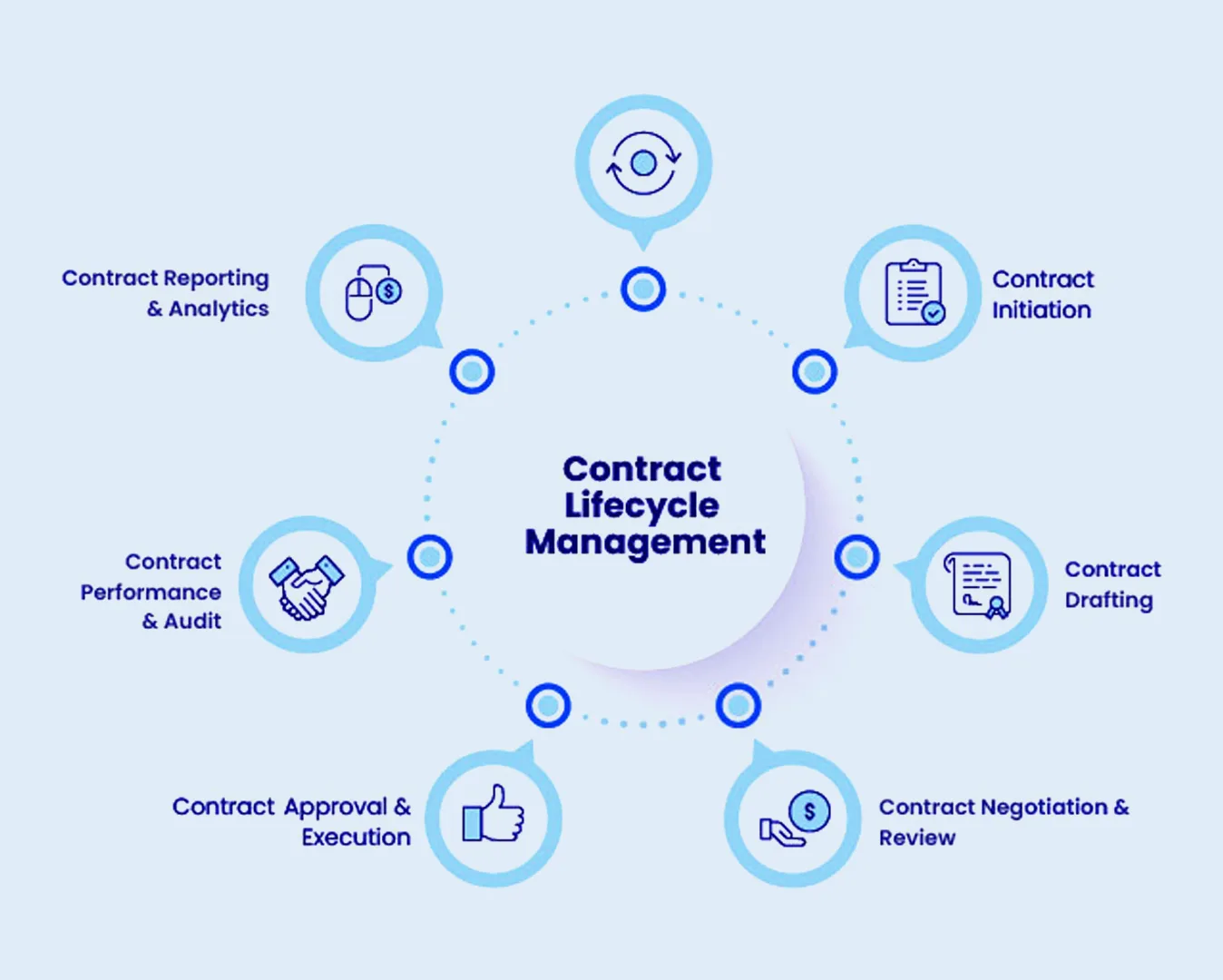
- Assessment and Planning:
- Identify Stakeholders: Determine who will be involved in the CLM process, such as legal teams, procurement, finance, and contract administrators.
- Define Objectives: Clearly outline the goals you want to achieve with CLM, such as reducing contract cycle times, minimizing risks, and improving compliance.
- Selecting CLM Software:
- Research and Evaluate Solutions: Explore Contract Life Cycle Management software options. Consider factors such as user-friendliness, integration capabilities, scalability, and the ability to customize based on your business needs.
- Vendor Selection: Choose a reputable vendor that aligns with your business requirements and provides adequate support and training.
- Customization and Configuration:
- Tailor to Your Needs: Customize the CLM software to align with your business processes. This may include configuring workflows, templates, and approval processes.
- Integration with Existing Systems: Ensure seamless integration with other business systems such as CRM, ERP, and document management systems.
- Training and Change Management:
- User Training: Train employees who will be using the CLM system. This ensures that they understand how to use the software effectively and efficiently.
- Change Management: Implement a change management strategy to address any resistance and ensure a smooth transition to the new CLM system.
- Centralized Repository:
- Create a Centralized Repository: Establish a centralized and secure repository for all contracts. This makes it easy to access, search, and manage contracts throughout their life cycle.
- Standardization and Templates:
- Standardize Contract Templates: Develop standardized contract templates to ensure consistency and accuracy in the contract creation process.
- Automate Approval Workflows: Implement automated approval workflows to streamline the contract approval process.
- Alerts and Notifications:
- Set Up Alerts: Configure the CLM system to send notifications for key contract milestones, renewals, and expirations. This helps in proactively managing contracts and avoiding potential risks.
- Compliance and Risk Management:
- Implement Compliance Checks: Build in compliance checks to ensure that contracts adhere to legal and regulatory requirements.
- Risk Identification and Mitigation: Use the CLM system to identify and mitigate potential risks associated with contracts.
- Reporting and Analytics:
- Generate Reports: Leverage the reporting and analytics features of the CLM system to gain insights into contract performance, identify trends, and make data-driven decisions.
- Continuous Improvement:
- Regular Audits: Conduct regular audits of the CLM system to ensure it is meeting your business objectives and identify areas for improvement.
- Feedback Loop: Establish a feedback loop to gather input from users and continuously improve the CLM processes.
By following these steps, you can implement Contract Life Cycle Management successfully and strengthen your business by improving efficiency, reducing risks, and ensuring compliance throughout the contract life cycle.




